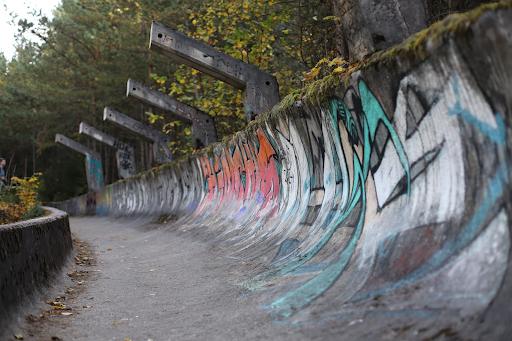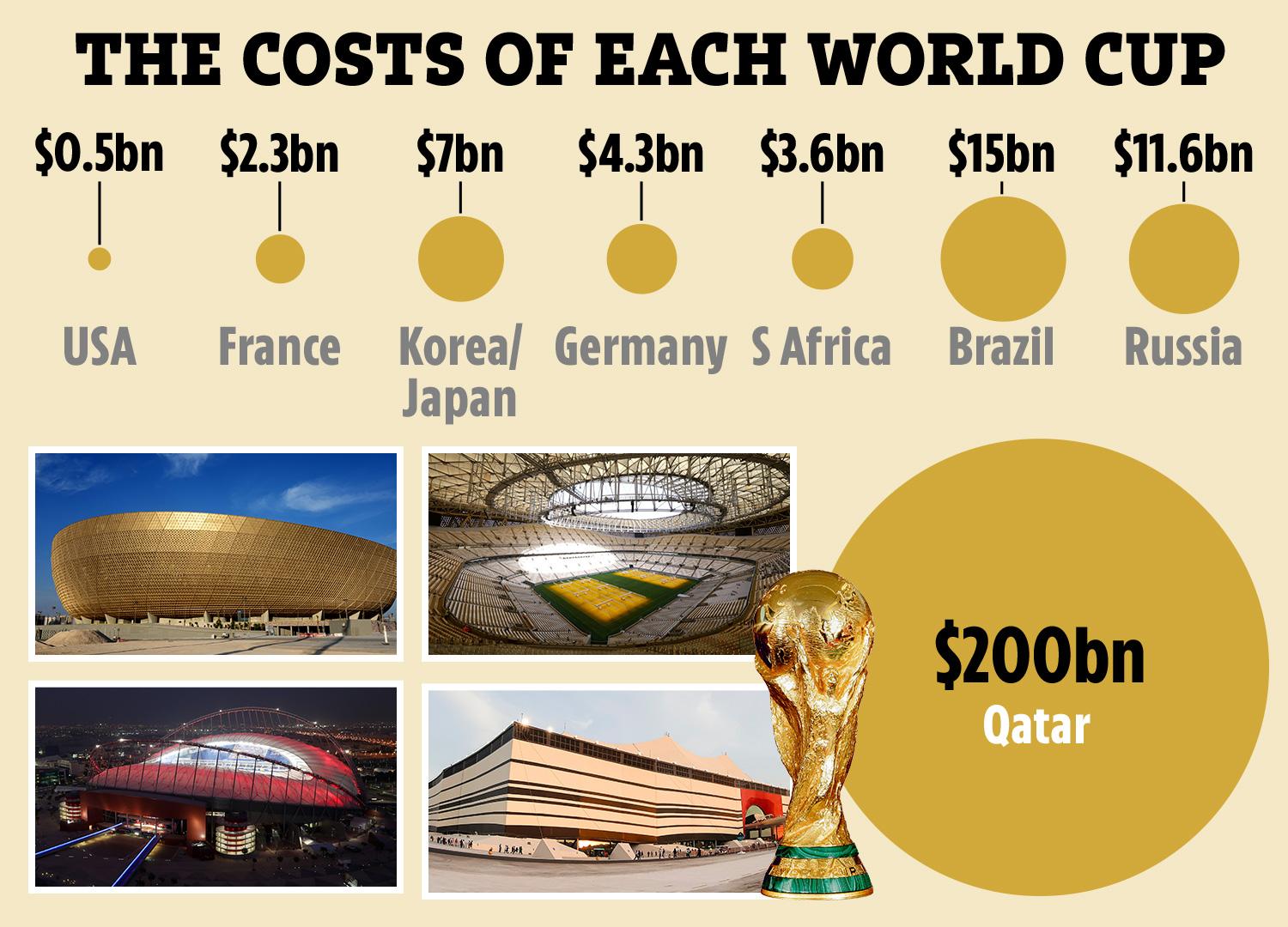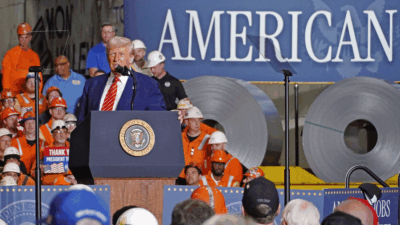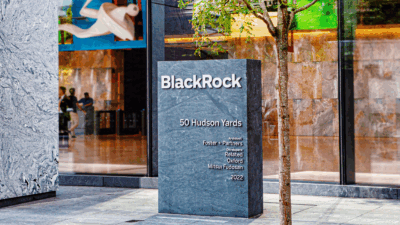
Sign up for smart news, insights, and analysis on the biggest financial stories of the day.
The 39-year-old slabs of crumbling, graffiti-riddled concrete are monuments to fiscal folly. The Olympic park in Sarajevo where Karin Enke easily broke the women’s 1,500-meter speed skating world record is a ghost town today.
Roughly 10,000 miles away in Brazil, stands the Arena da Amazônia soccer stadium. It took four years and $270 million to build and now sits mostly unused. Developed for the 2014 FIFA World Cup, on a good night, a local football club might draw 1,000 spectators…or 2% of the stadium’s capacity.
There’s a name for these modern wonders of the world: “White Elephants.” Capital projects for short-term massive sporting events that quickly become financial burdens.
Today we’re going to take a closer look at White Elephants. What gets organizers so excited about them and how much money is needed? And are they an endangered species? Organizers are beginning to realize that building everything brand new can be a real crapshoot in the long run – creating debt, housing problems, and civil unrest – and nations and cities are looking to adopt a more sustainable mindset, one based on recycling.
So pour yourself a bowl of Wheaties and let’s dive in.
What Could Go Wrong?
Hosting an event the size of an Olympics or a World Cup is as much a dream as it is a nightmare. Cities see them as an opportunity to breathe new life into the area, attracting enormous amounts of ad revenue and tourist spending. For a couple of weeks, the entire world is focused on one particular place.
The high doesn’t last. Once you look past all the gold medals and highlight reel moments, these events —which come at high price tags— are historically known to create both economic and humanitarian crises:
- In the five years leading up to the 1988 Seoul summer Olympics, an estimated 48,000 buildings were destroyed, displacing a whopping 720,000 people, according to a report from Seoul National University.
- In 1976, then-Mayor of Montreal Jean Drapeau said, “The Montreal Olympics can no more have a deficit than a man can have a baby.” Let’s just say he had twins. The Olympic stadium there gained the nickname The Big Owe, and the city spent the next 30 years paying off its $1.5 billion debt from the summer games.
- In 2016, Rio de Janeiro, Brazil, became the first South American locale to host an Olympics, and very quickly the locals realized none of the spending was going to do them any good. Favelas were destroyed, the majority of venues have been abandoned, and the city was left with more than $100 million in debt. Ryan Lochte wasn’t the only one robbed.
“If we were living in a rational world, we would have the same city hosting the Games every two years,” Smith College Professor Andrew Zimbalist told The New York Times. “There’s no reason to rebuild the Olympic Shangri-La every four years.”
Cities appear to be wising up. While the International Olympic Committee got used to receiving dozens of bids for every Olympics, more and more cities are staying on the sidelines. For the 2024 Summer games, only five cities initially bid, but residents of Boston, Hamburg, and Budapest all agreed hosting the games would not be economically sound before it was awarded to Paris.
LA for the Win
Let’s give the Olympics their due as a cultural and commercial success — we are The Daily Upside after all.
And one of the most successful from both a cultural and commercial perspective was the 1984 summer Olympics in Los Angeles, which helped make the games must-see television – and irresistible for cities eager for their star turn. The LA games also suggest an economically sustainable path forward for future hosts.
The XXIII Olympiad certainly got off to an inauspicious start. Los Angeles was the sole bidder. Nobody wanted it, except for the Shah of Iran, but when he was overthrown in 1979, Tehran withdrew its bid.
Yet those games played a pivotal role in developing modern day broadcasting capabilities, put a long overdue spotlight on female athletes, and produced some indelible moments. Mary Lou Retton became the first US female gymnast to win all-around gold. Joan Benoit won the first women’s marathon gold, outpacing 13 of the previous 20 men’s gold medal winners. And Carl Lewis won four gold medals in track and field events.
Oh, it was also a big financial success:
- Olympic ticket sales hit a new record, nearly doubling the 3.2 million sold for the Montreal Games in 1976, and at home, more than 180 million Americans tuned in, making it the most viewed event in television history at the time.
- Because LA relied mostly on existing stadiums and infrastructure, many are still used today. The LA Memorial Coliseum has since been the site of pro and college football, the X Games, and concerts. It’s also where Snake Pliskin played a deadly game of basketball in 1996’s Escape from L.A.
At the time LA’s bid was criticized for relying on already existing facilities and corporate sponsors. You heard that right, some actually ridiculed the city for not wasting money. In the end, LA earned a tidy $223 million from the event and the city is set to host the games again in 2028.
The Why of Qatar
The recent FIFA World Cup in Qatar was one of the most expensive sporting events in modern history. Since it was chosen as the host site in 2010, the tiny gas-rich Gulf State spent roughly $220 billion (and perhaps as many as thousands of migrant workers’ lives) building new stadiums, a metro system, roads, an airport, hotels, restaurants, and entire neighborhoods.
Some of these projects were going to be done regardless and were merely fast-tracked to coincide with the tournament — like the entirely new city of Lusail, which hosted the final match between Argentina and France.

Nevertheless, $220 billion isn’t chicken scratch. The number becomes even more absurd when you realize that Qatar is expected to make only $17 billion as a return on its investment.
It’s too soon to say whether the World Cup was a good investment, but experts say all that spending to put Qatar on the map as an alluring Middle Eastern tourist and business destination like Dubai and Abu Dhabi could have serious ramifications.
“A lot of thought and effort is going to be needed to repurpose a lot of that infrastructure to make it usable, to make it fit for purpose beyond the World Cup,” Robert Mogielnicki, a senior resident scholar at the Arab Gulf States Institute in Washington, told Reuters.
Now that the tournament is over, Qatar stands to lose a section of its population, including a good many construction workers, engineers, and designers. Qatar will be hard put to replace them.
“Maybe these will all be empty buildings after the World Cup. We don’t know,” Alexis Antoniades, an economics professor at Georgetown University’s campus in Qatar, told Reuters. “You see all these flats? There’s too much accommodation here.”
Looking ahead at the 2026 World Cup, which will be hosted in the US, Canada, and Mexico, the three nations will take a page out of LA’s book and not build any new stadiums, relying instead on already established venues.
To see how this system of reduce, reuse, recycle will work on a continent-spanning soccer tournament, let’s shrink down and take a look at an event currently going on in upstate New York.
Little Lake Placid
Up in the Empire State’s Adirondack Mountains, about an hour west of the state’s primary north-to-south freeway, lies the little village of Lake Placid. It’s the site of the 1932 and 1980 Winter Olympics where, of course, speed skater Eric Heiden earned five gold medals and the USA hockey team beat the Soviet Union in what became known as the Miracle on Ice.
With roughly 2,200 residents, it’s far from the size of other Olympic host cities like Beijing or Vancouver, and yet it’s once again hosting a major sports event:
- This week, Lake Placid kicked off the Winter University Games, which are like the Olympics for college students. While the village hasn’t let its venues fall into disrepair like Sarajevo or Rio de Janeiro, the University Games would’ve been impossible to pull off if Lake Placid had to work with the same facilities it did 42 years ago.
- Taking the burden off the village itself, the state and its sports arm, the Olympic Regional Development Authority, invested $500 million into revamping Lake Placid’s aging venues – the ski jumping complex, the cross-country ski center, the speed skating oval, the bobsled run – as well as nearby facilities like Wilmington’s Whiteface Mountain Ski Resort.
“The return on investment is going to be decades into the future,” Lake Placid Mayor Art Devlin told The Daily Upside. “The only reason we could afford this was the state of New York. They had belief in us, they trusted us, and they made the big investment.”
Tourism really is the only industry in Lake Placid, so the village is relying on these games and venue improvements. The hope is to attract not only more visitors but also athletes who want to train and stay – and spend – in Lake Placid.
The University Games are still going on, but already the venue upgrades are paying dividends. Next month FIS, the international governing body for skiing and snowboarding, will host a world cup event in Lake Placid.
“We’re going to host that for the first time in, I don’t know, maybe 28 years,” ORDA board member Art Lussi told The Daily Upside. “The midwest was supposed to host it, but they weren’t up to standards, so FIS called us. Normally, you have to bid and pay to get these kinds of events, but now, we’re getting asked to host them.”











